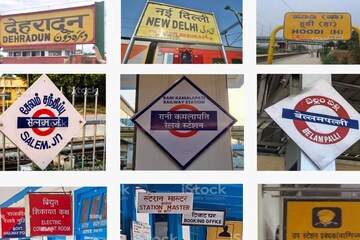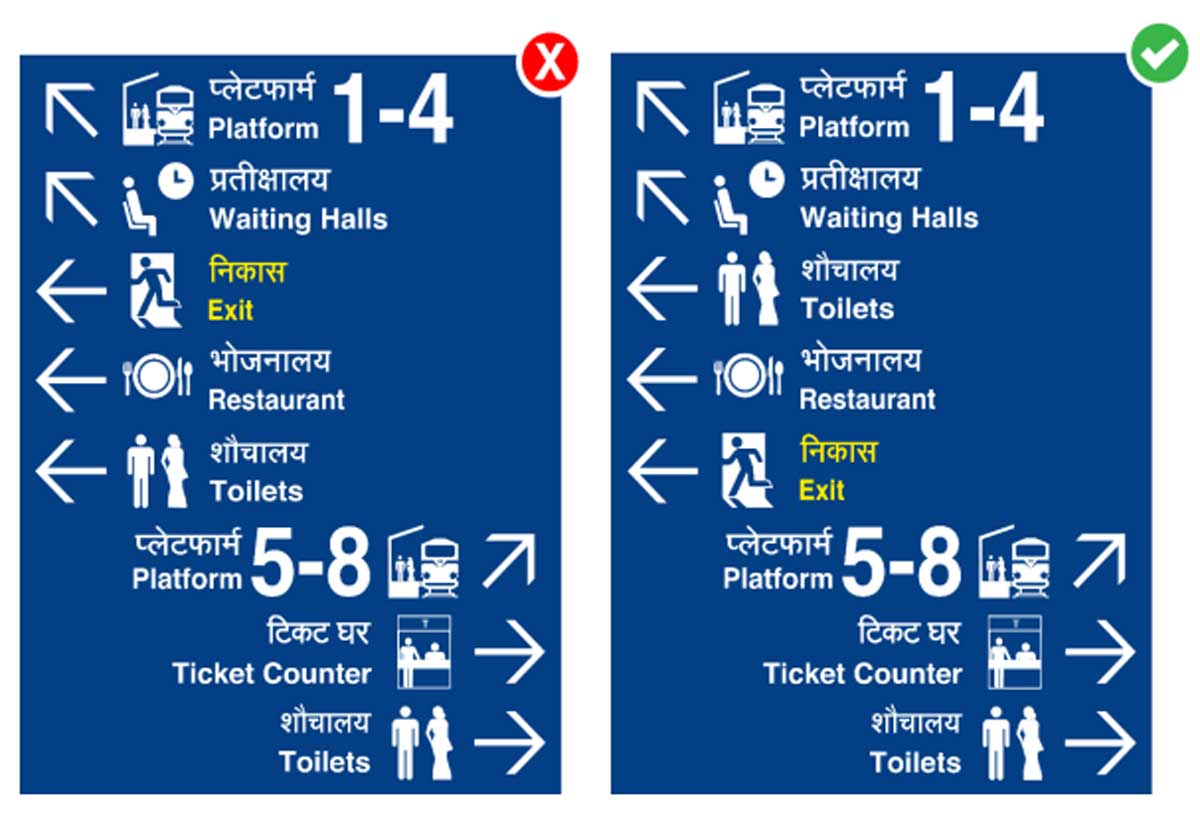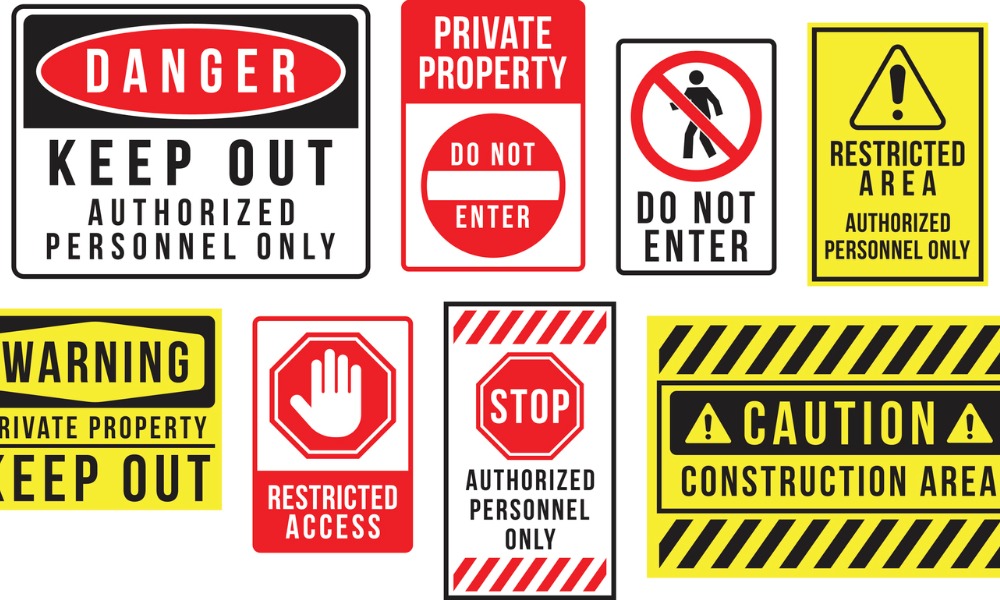In a world gripped with over-reliance on technology, everybody now is relying on their phones and navigation systems to find buildings and architectural structures. So, are architectural signages still relevant? Are these visual infographics still important in an urban environment?
Before we get into these pertinent questions, let’s review the basics:
What are Signage Systems?
Signage systems are visual infographics given to the general public that guide people’s passage in the real world. Many common signages such as arrows, maps, colour-coded visuals, pictograms and even company signages are made to guide people’s movement in the physical world. Take them as a guiding light for people to locate companies, their way, and this act of following a signage is called wayfinding, way signing or signposting. In the context of architectural design, signposting helps customers develop a first impression of a company or residence, they assimilate with the aesthetics of the architecture and building.

Architectural Signages?
Architectural signages could be external or internal and can be used as an infographic or for decorative purposes. The architectural signage includes using premium materials that lasts a long time and adds to the overall design of the space.

Is there a need for Signages?
In an urban environment, these small but pertinent signs help us navigate and understand an architectural structure better. Especially in a country such as India with the vast number of architectural buildings both cultural and contemporary crowd the city lanes, this information helps a person find their way and enriches their experience within that area. We are hardwired now to find and follow signs, to look for clues which are suggestive of what we are looking for. Mobile phones may help us locate a particular structure, but signages reassures us of our understanding of that building being the one we are looking for.
Signages are also used separately in residential spaces, in companies as their branding element, on roads and for general consumption.

Moreover, these systems:
1. preserve the distinctive history, architecture, and landmarks of an area.
2. Enhance the visibility of less prominent districts and destinations.
3. Facilitate public access to parking, streamline traffic flow, and enhance the integration of car, pedestrian, and transit modes.
4. Minimise visual confusion by presenting clear, consolidated, and on-brand information and identity.
History of Wayfinding Signages
The concept of city legibility can be attributed to Kevin Lynch, an American urban planner from the 1960s. Lynch embarked on a comprehensive five-year study to understand how individuals absorb information within the urban environment. This exploration, documented in his seminal work titled “The Image of the City” (1960), not only introduced the term “wayfinding” but also laid the foundation for the concept of city legibility.

Signages at Indian Railway Stations
One case study of the usefulness of Signage systems is the Indian Railways Network, in fact The Indian Railways planned on overhauling the signage system and introducing new signages last year. More than 1200 railway stations were chosen under the Amrit Bharat Station Scheme and work would be under progress soon with new design principles being applied for the signages.

According to the Union Minister for Railways, Ashwini Vaishnaw said, “It was felt to issue standard guidelines on signages at stations that will be consistent and adequate. The Indian Railways will adopt modern, standard signages which are divyang-friendly.” This would help the commuters find their stations and trains much faster, and help the commuters navigate their way through the maze that is the Indian railways and find basic amenities faster.

Every city also requires a wayfinding system that is efficient, elegant, localised and based on the physical environment of where it has been placed, this also gives room to more creativity and we can consider the cultural and historical character of the city, while designing the signages.

Take for example the signages that could go up at Old Delhi, instead of the blue/green signboards we already have in place, urban city planners and designers can design boards made from red sandstone or ones which may be engraved on a particular stone. These match the aesthetics of the space and are durable in nature.
Signages in Global Environment

Wayfinding signs in London, Rio De Janeiro and Bristol are known and have undergone changes in their design language. London has the legible London system that is comprehensive and detailed which is the brainchild of a design practice called Applied. It encompasses signage, printed maps catering to commuters, businesses, visitors, and shoppers. Additionally, it includes downloadable and digital maps, along with various smartphone apps, offering integrated public transport information. The system was applied after understanding the core nature of the city and its people and it helps the people connect with their city more easily and makes the area more pedestrian friendly, as well as spaces more accessible. In 2015, Rio also implemented a similar programme called Walk Rio with more than 500 signs and kiosks with maps which catered to over 12 million residents and 5 million tourists each year.

Urban wayfinding systems and signage systems go beyond the simple act of indicating one’s location for both vehicles and pedestrians. They play a crucial role in enhancing the urban brand of every city by improving the overall legibility, navigation, understanding, and accessibility of the environment. Moreover, these systems contribute to reinforcing the city’s identity by highlighting its history, architecture, and landmarks.In addition to these aspects, urban wayfinding systems establish and strengthen destination hierarchy, making lesser-known districts more identifiable and facilitating improved traffic flows, safety measures, and parking location accessibility. Also, it serves as an educational tool, providing visitors with insights into the city’s boundaries, key destinations, and distinctive features.
Feature image Courtesy: Canadian Occupational Safety
References
https://www.hindustantimes.com/delhi-news/70-signboards-across-delhi-wrongly-placed-but-better-than-most-cities/story-vspjzy9bla0HmYpWsCfJyN.html
https://www.thehindu.com/news/national/railways-wants-to-overhaul-signage-system-for-better-passenger-comfort/article66854419.ece
The Importance of Wayfinding & Architectural Signage in Urban Landscapes





